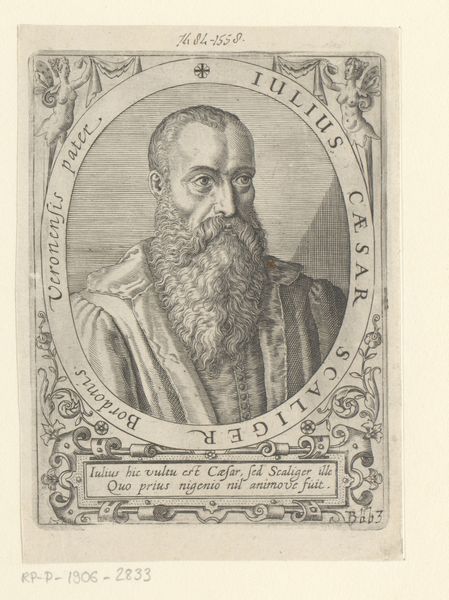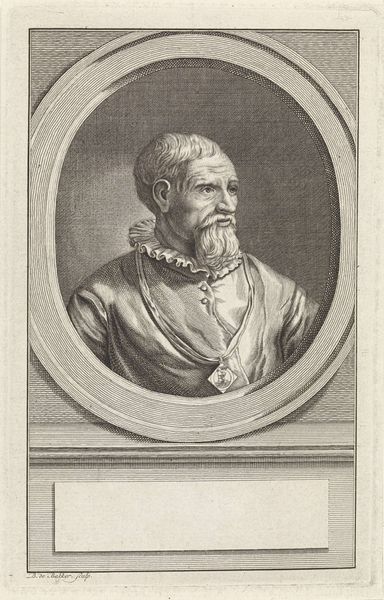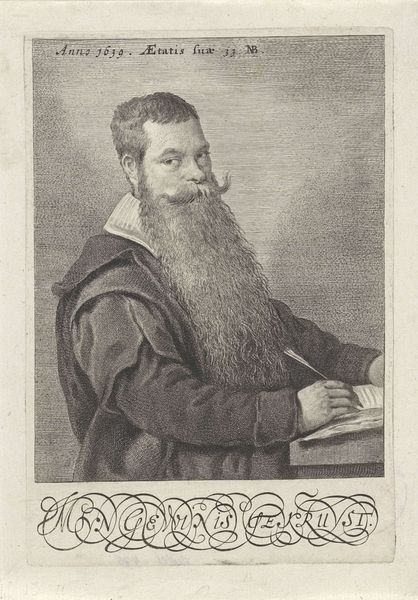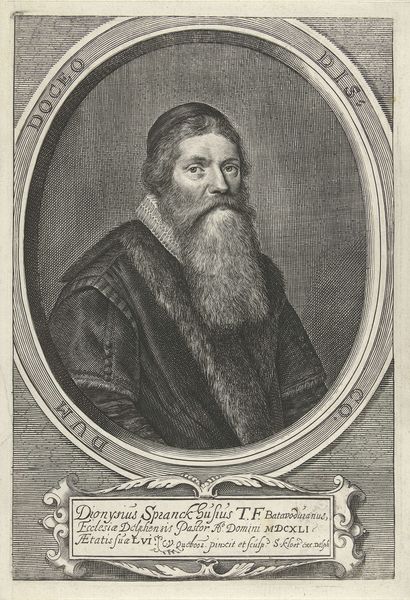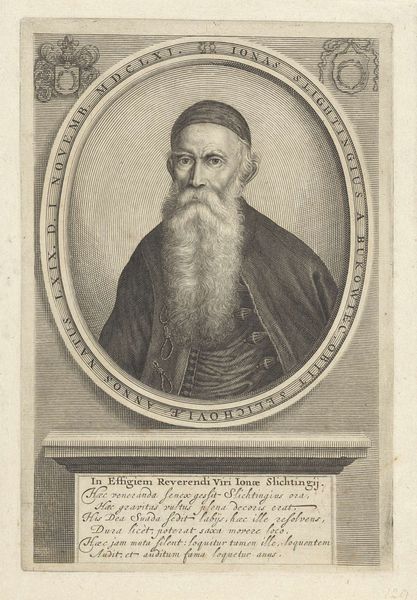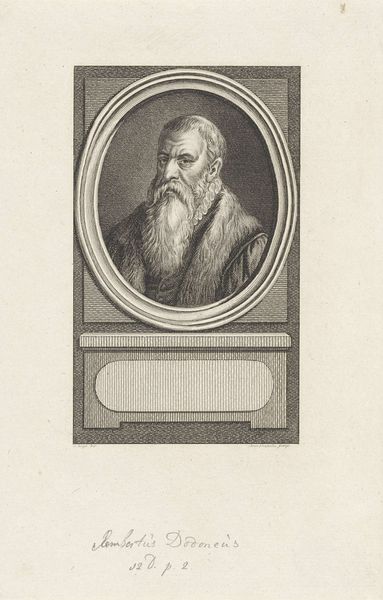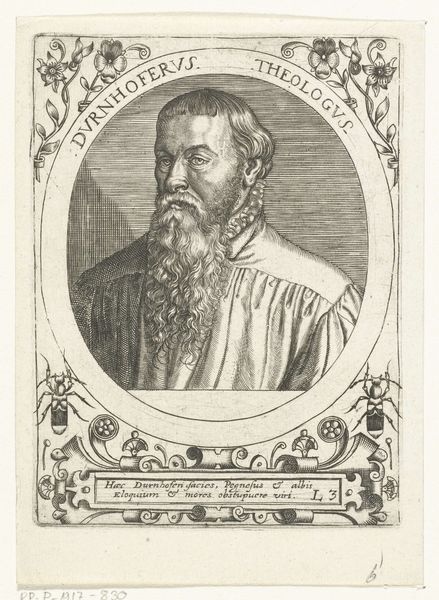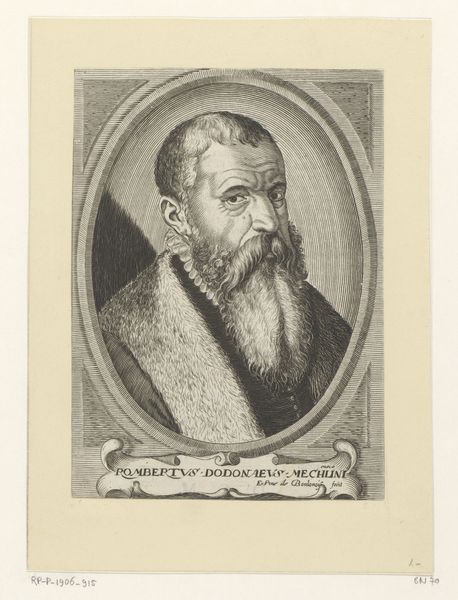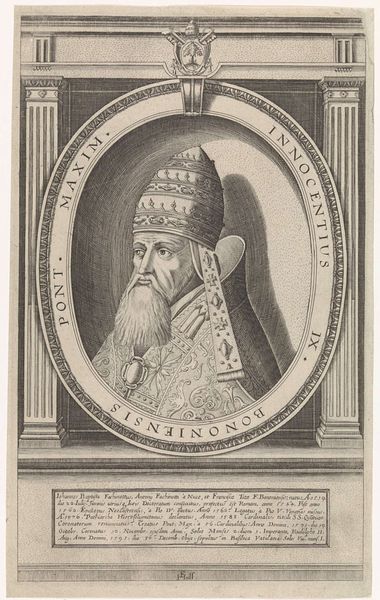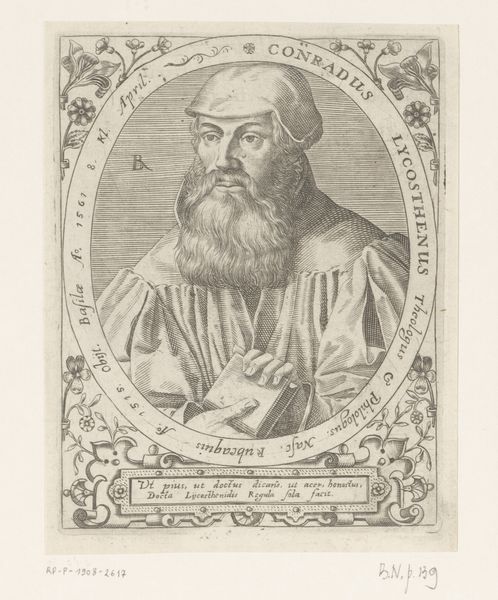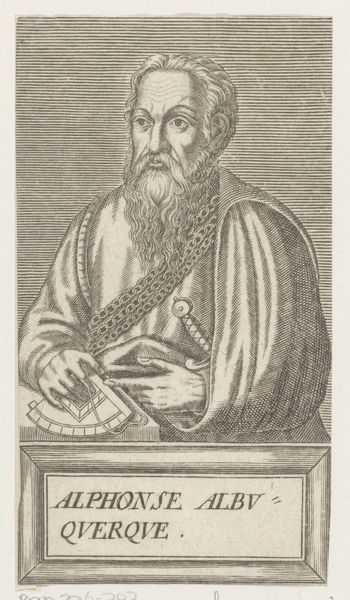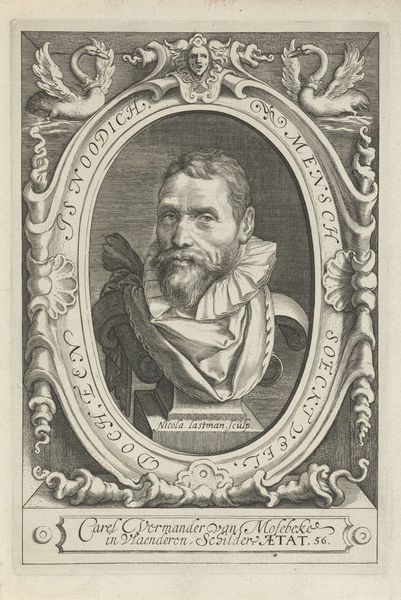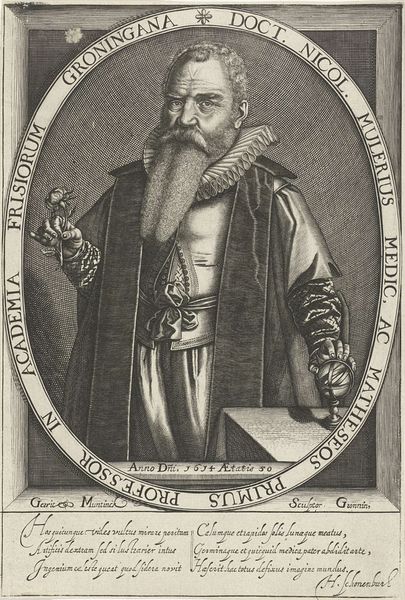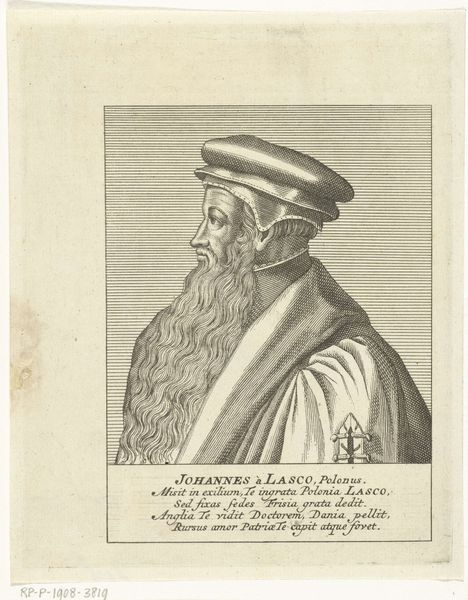
print, engraving
#
portrait
# print
#
historical photography
#
portrait reference
#
history-painting
#
engraving
#
realism
Dimensions: height 230 mm, width 149 mm
Copyright: Rijks Museum: Open Domain
Curator: Here we have a fascinating engraving, dating from between 1855 and 1857 by Jan Frederik Christiaan Reckleben. It's a portrait of Johannes Bogerman. Editor: My first impression is how meticulously rendered this is. All those tiny lines building up form! It must have taken an age. It projects a real air of stern authority too, doesn’t it? Curator: Absolutely. And think about what Bogerman represented. He was a key figure in the Synod of Dort, a major event in Reformed Protestantism. Reckleben would have been conscious of portraying not just a man, but a symbol of theological conviction. Look at the way the engraver emphasizes the determined set of his jaw and the directness of his gaze. It transmits determination and intellectual power. Editor: The choice of engraving also interests me. Photography was developing then, but the artist chose a print, a process that would require an artisanal skill in order to accurately communicate the desired image and impression of status and influence. It emphasizes Bogerman's place within a longer tradition of religious leaders portrayed in print. It’s a conscious visual decision with class implications. Curator: Indeed. The very deliberate process also speaks to a certain veneration, doesn’t it? Consider that elaborate fur-lined robe – an obvious signifier of wealth, privilege, and also probably warmth since many religious synods meetings dragged for long hours in unheated buildings! The meticulous details add symbolic value. Each precise line, carefully considered, reinforces the image of a man of great importance and weighty ideas. Editor: The evenness of tone in this artwork is a very specific technical feat to make. So, there were these networks of artisans at that time with this level of specialization that must be seen as being distinct to fine arts production—a different social milieu than our stereotypical 'artist genius' perhaps? Curator: That's a keen observation, an artwork doesn't just appear-- the web of skill surrounding production changes how images resonate and what they may ultimately convey. Editor: So while it’s an old medium in some respects, in another it speaks to industrial age of skilled artisanal labor and the rise of printed media... I am seeing this figure in a fresh way now.
Comments
No comments
Be the first to comment and join the conversation on the ultimate creative platform.
